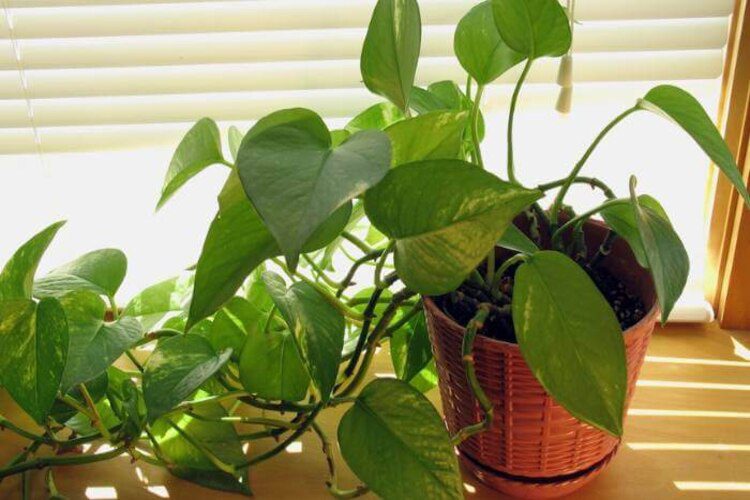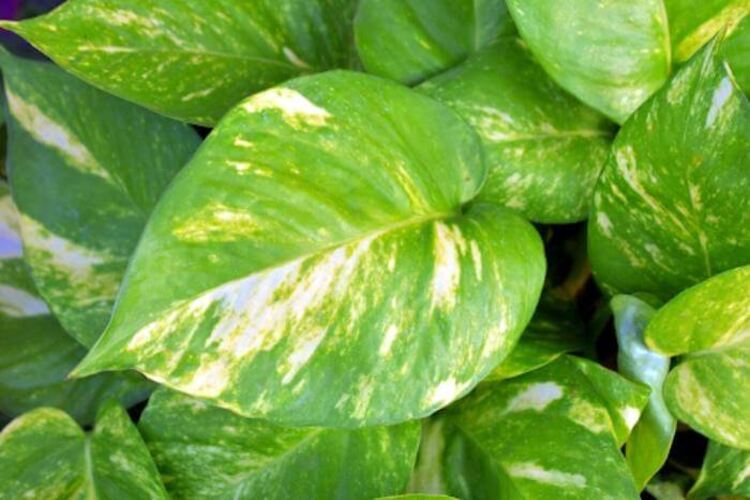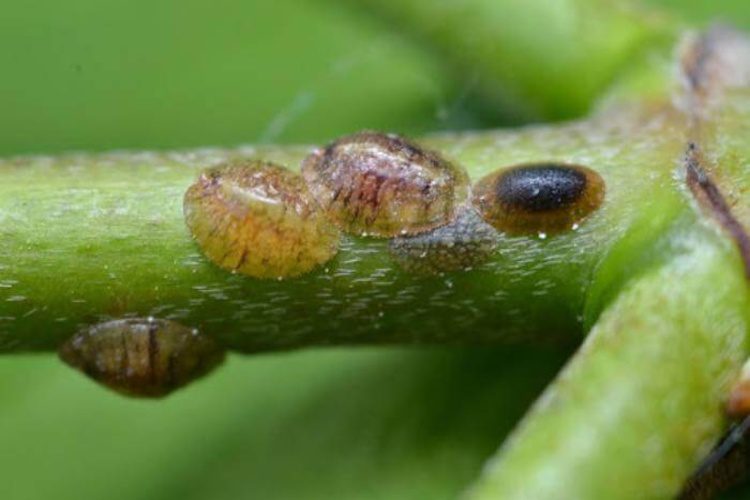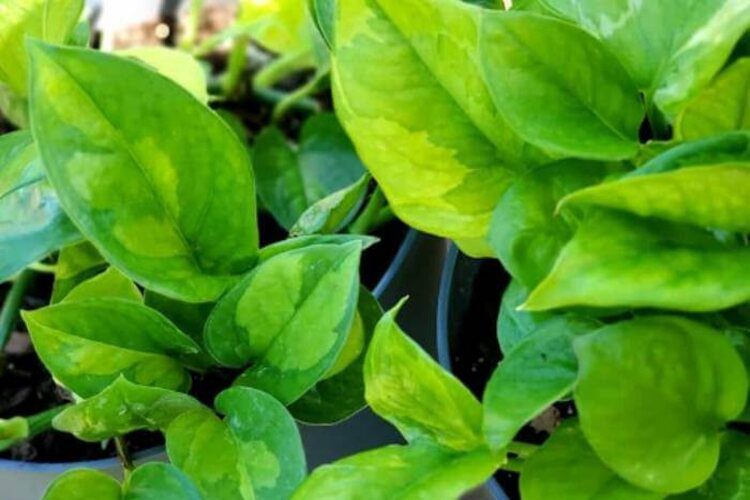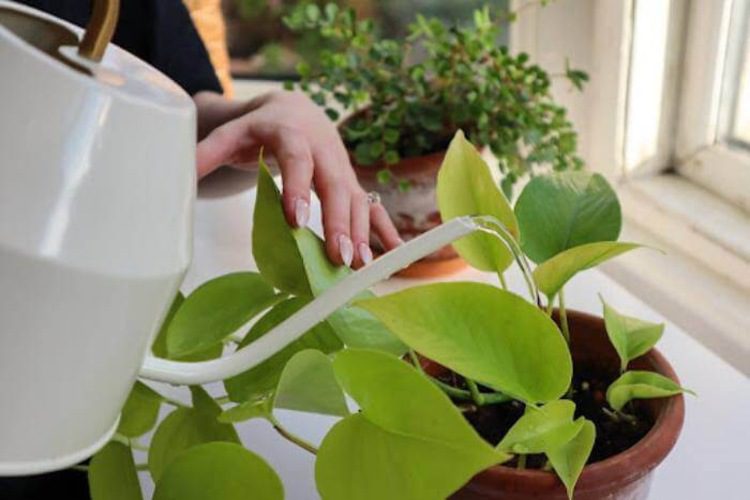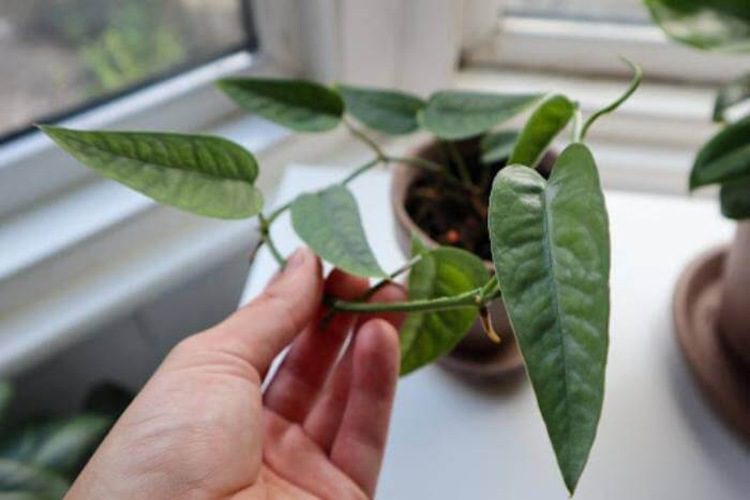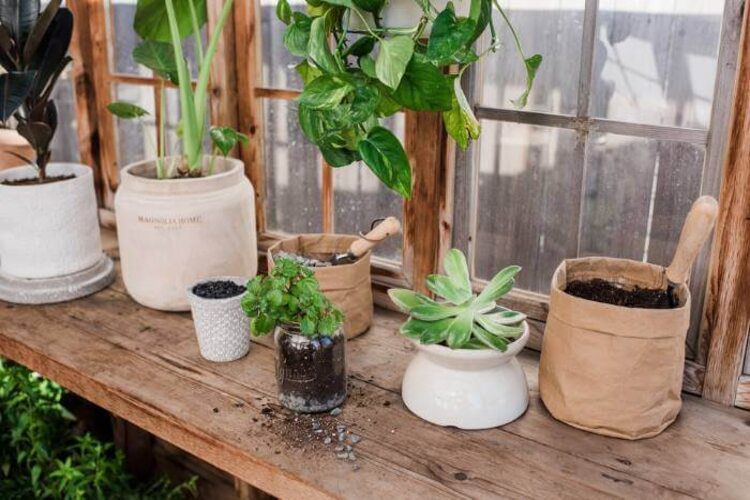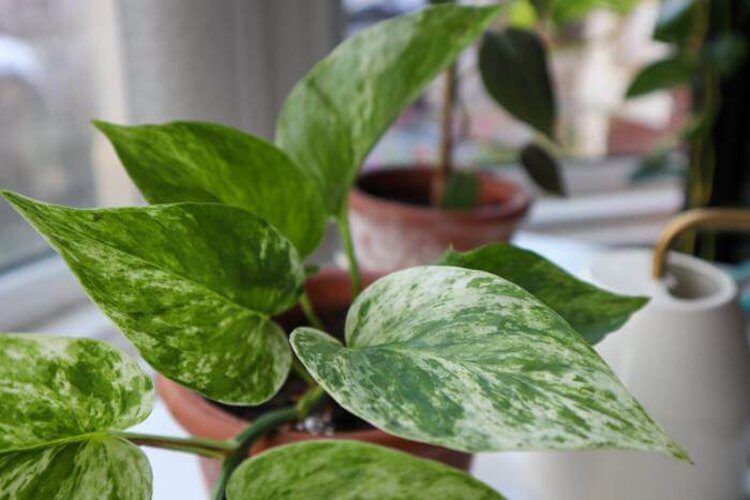Pothos Leaves Turning Yellow: 9 Main Reasons
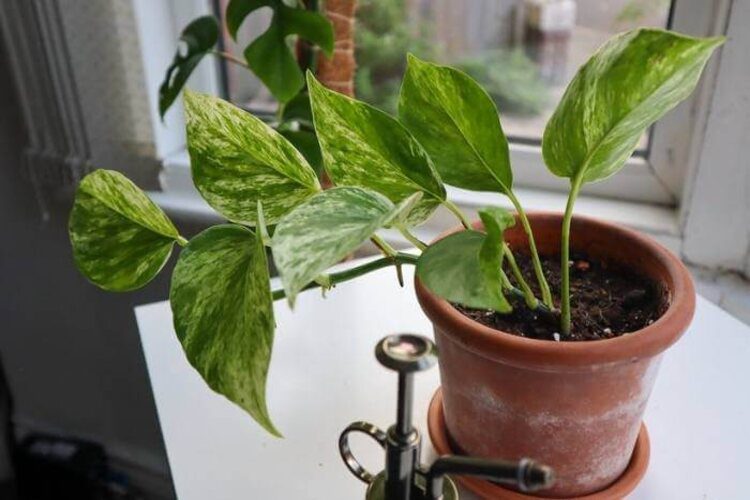
Do you have a problem with pothos leaves turning yellow? Don’t you know the reason and how to fix it? Actually, the leaves could be turning yellow for a wide range of reasons. Depending on the reasons, we have appropriate solutions to solve them. Let’s identify this typical issue and restore health to your plant!
What Does Leaves Turning Yellow Look Like?
As the name of the problem suggests, the leaves will no longer be green as you see them but yellow. In addition, you may also see some other obvious signs. Their leaf tips are scorched, and the margins get dull yellow.
In some circumstances, these leaves may have brown spots and become thinner with time. They will eventually drop if you don’t fix them promptly. These are the common problems with leaves turning yellow. The leaves of your Pothos may show specific symptoms depending on the root cause.
Let’s keep reading to learn about the culprits behind this phenomenon and find practical solutions for each situation!
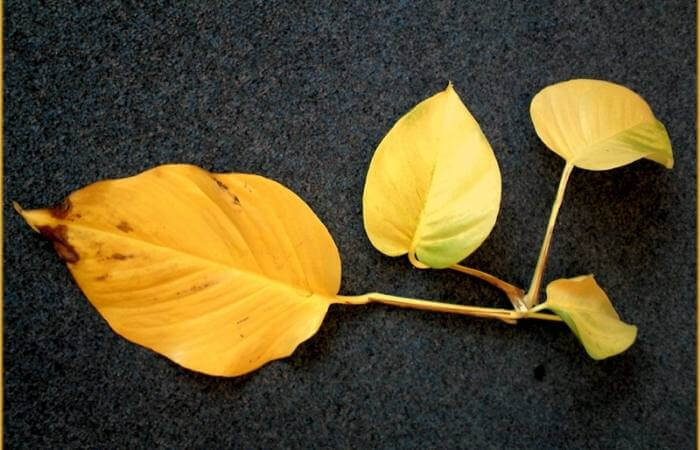
Pothos Leaves Turning Yellow: Causes And How To Fix
The pothos plant’s leaves may become yellow for a variety of reasons. Yellowing leaves are a sign of stress and a typical plant response.
The Pothos has a few unique features. Some varieties may come with natural yellow or white leaves, such as Neon Pothos. Thus, you must ensure your yellow Pothos leaves are not due to genetic matters but illness. Let’s look through 9 reasons why your Pothos struggle with yellow leaves to have appropriate solutions!
Water
Pothos are not relatively picky when it comes to water. However, you must ensure to provide them with a consistent watering schedule. Giving these plants too much or too little water can cause them health problems due to hydration imbalance.
Overwater
Overwatering is one of the most common causes of yellowing leaves. Excessive water in the Pothos tissues will make their cell walls damaged. While Pothos are tropical plants, you should never overwater them. Otherwise, they may suffer root rot.
If you are overwatering your Pothos, you may see these signs below:
- The leaves turn yellow, get softer, and lose their original shape. They’ll droop and get flaccid.
- A dull ochre shade will often characterize the yellow.
- Several leafages in various parts show the yellowing.
- The yellowing will develop rapidly.
- In severe cases, the leaves may turn white and fall off.
How to fix:
If overwatering is the root cause, it’s advisable to water your Pothos less than usual. Always choose a potting mix that drains properly, and wait until the top quarter of that soil has dried up before watering. Moreover, pay attention to drainage. Slow-draining soil may hold moisture, preventing the plants from absorbing the required nutrients.
Underwater
Pothos can survive even if you don’t water them for a few days. However, the leaves become yellow if underwatering occurs for a long time.
You can notice these signals to determine whether your plants are underwatering:
- The leaves and the vines will become droopy.
- They curl inward and look limp.
- The leaves turn yellow and look crispy.
How To Fix:
You should water your Pothos regularly, but not too much. Before watering, you can poke a finger into the soil to check the dryness and estimate the right amount of water for the plant. To thoroughly hydrate your Pothos, gradually add more brief watering periods.

Light
Pothos naturally produces more other pigments acting as “sunscreens” and less chlorophyll to protect against excessive light. Chlorophyll cannot efficiently photosynthesize under intense UV radiation, whereas carotene and anthocyanins can.
These plants love sunlight, but not too much or directly. Otherwise, they can get stressed and burned when exposed to excessive light. The signs of too much direct light in these plants may include:
- The leaf’s green colour might fade.
- The yellow shade tends to get darker.
- The yellow hue on the leaves turns brown or black.
- Edge burns may appear.
How to fix:
You should first clip back wilted or visibly yellowed portions if your plants have received excessively direct sunlight. Besides, it’s best to relocate them to another place with indirect sunlight to avoid edge burn.
Ensure that your Pothos trees receive some indirect sunlight but avoid intense exposure.
Choose a position that collects some daylight or hang a shutter to block direct sun rays from your plants.
Infestation
Even after carefully caring for your trees, they still suffer from infestations, including pests and diseases.
Pests
No matter where you grow Pothos, they are not pest-proof. The common pests you will often see on these plants are spider mites, aphids, and mealybugs. If the pests cause harm to your trees, they may show some signs:
- The stem and leaf tissues turn yellow and eventually die off.
- The rotting brown spots will also appear and expand on the foliage.
How to fix:
It’s simple to get rid of mealybugs. Due to mealybugs’ tiny size, it might be challenging to detect an infestation. If it’s a small infestation, you can use rubbing alcohol and a cotton swab to apply the entire affected region.
You must perform this treatment every day until these pests disappear thoroughly. Besides, you can utilize neem oil. It is a natural, safe, and beneficial solution for trees.
Diseases
These plants are susceptible to diseases like fungi or bacteria because you overwater them. The topsoil stays moist when you add additional water, even before waiting for the soil mix to dry up, which is ideal for soil fungus to grow.
Rhizoctonia stem rot may result from a fungal illness that starves the Pothos of nutrients. The indications of unhealthy Pothos consist of the following:
- The leaf turns yellow.
- The root has an unpleasant rotten egg smell.
- The rhizome turns black or brown.
How to fix:
Remove all diseased or infected stems and leaves. After that, use the appropriate fungicide, insecticide, insecticidal soap, and horticultural oil. Act promptly to avoid letting these problems spiral out of control and harm your plant.
Over fertilizer
If you fertilize too often and don’t dilute the fertilizer correctly, your Pothos may suffer root and leaf burn due to excessive salt and mineral buildup. This problem may cause your plants to show the following symptoms:
- The root turns black or brown.
- The leaf becomes yellow with brown patches at the tips.
How to fix:
You should flush the soil using filtered or distilled water to remove excess fertilizer. After that, ensure you won’t over-fertilize or under-fertilize your Pothos to help them receive balanced nutrients.
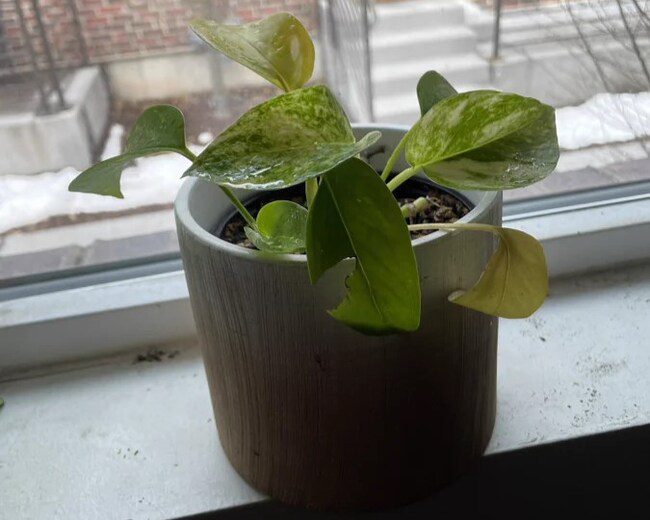
Other Causes
Humidity
Pothos plants, indigenous to tropical rainforests, have particular requirements for humidity. The leaf tip and foliage may become yellow or faintly brown due to low humidity.
How to fix:
For optimal growth, humidity levels should be at least 40% and ideally over 60%. If the humidity falls below 40%, use a humidifier or a pebble tray to raise and maintain the levels.
Temperature Shock
If temperatures fall or rise too much beyond the optimal range, the plant might experience stress and temperature shock. The plant will try to survive by letting its foliage grow yellow and drop off to conserve energy and reduce exposure to harsh temperatures.
How to fix:
To avoid future problems, move the plant to another suitable place and keep the temperature between 65°F and 85°F. While it may survive somewhat outside of this range, the plant will experience significant stress if the temperature is far below 55°F or much higher than 90°F.
Small Pot
Pothos plants develop quickly, so you should pay attention to their growth and repot if necessary. If the pot is too small, it can’t accommodate big roots, which causes root-bound problems.
How to fix:
The best solution to this issue is to repot your plant. Ensure the new container is large enough for big roots.
FAQs


